How To Add Creativity To Academic Writing
In this post, I’m going to show you the process I go through when I add a splash of creativity to my boring academic writing.
I’m in the middle of revising my 2nd draft into a 3rd one and I figured this would make a good topic to write about. I’m sure many of you strong writers out there have trouble balancing creativity with academic credibility. You are not alone. I do too! Take a look at this paragraph:
The amazing reach of different music styles has produced a plethora of hybrids and cross-cultural forms of music. “Cross-cultural” here describes the back-and-forth interactions between two or more cultures (Kim, 20). Therefore, “cross-cultural music making” is the process of mapping different conversations between two or more cultures to create a new, aural experience. This process is creative by definition (Kim, 30). Kim argues that despite the creative process of producing “cross-cultural music,” one cannot ignore the historical, political, and economic lenses contextualizing the power dynamics at play (27). Rightfully so, these dynamics are often thought of within the context of colonialism, and more recently “Western imperialism.”
Pretty dry, huh? Let’s get started.
1.) Contextualize
Now, before we dive right in, you’ll need to know the context. My paper primarily revolves around the themes of identity and popular music. The first few pages talk about my relationship with music through a memory I have when I went to Nepal. I also plan to incorporate my recent experiences with music in Viet Nam. That’s the basis for the creative side of my essay. Here’s an excerpt:
Waves of nostalgia washed over me with every beat. This music represented an era in which I had never left the United States. Three weeks in Nepal had changed me. In the mountains, I dwelt in a vacuum of space and time which I knew, in the future, would only exist in my memories. The songs I played sang out over the landscape of rolling hills, untouched by such sounds before.
The first thing you should do when you’re trying to make academic writing more creative is to consider what story you are trying to tell. What makes or breaks a good creative essay is the author’s ability to tell a story. The story is key. Take a moment to revisit the memory you are writing about and then come back to me.
2.) Ask yourself questions
Now that the memory is fresh in your mind, you should think how it connects with an idea from one of your sources. Harder than it sounds, but I’ll walk you through the process so you can get an example what I mean.
Academic Concept:
Cross-cultural music making: back and forth conversation between two or more cultures produced in some music styles.
This process is made possible because of the historic relationships between nation-states. Since the United States’ relationship with Viet Nam comes from so many different, yet connected events, American and Vietnamese culture have been mixing together. Popular music is a perfect example of this.
Why did I choose to include this?:
Why is cross-cultural music interesting to me? This is the question I must ask myself in order to create something from the concept. My answer lies in the way that it’s produced. Trans-cultural diffusion informs how ideas are spread, but in the past these ideas were bound by time and space. Now these restrictions are passed through social media and technological advances in communication.
3.) Link ideas with memory
Now that I have an understanding of the idea and why I’m writing about it, it’s time for me to dive into my memories. What experiences have I had with cross-cultural music making?
Well, I’ve never been much of a musician, so I’m not going to look there. However, I have many experiences with cross-cultural music. In fact, a majority of what I listen to involves multiple cultural layers.
Before I went to Viet Nam, I spent a lot of time finding ways I could connect with my wife’s family and friends. Music is very close to me, as you might understand if you’ve already read some of my previous drafts. So naturally, I looked into Vietnamese music. I searched and searched for music I could learn to appreciate. Appreciative listening is the most important thing to do when you think you don’t like something. Look for something you can appreciate in everything, and your contempt will disappear.
To this day, Vietnamese future bass is where I find the majority of music that I find interesting. And I’ll tell you what happens next. Once I had put together a playlist of Vietnamese songs that I liked and listened to them more, I learned to enjoy them. Once you learn to enjoy something, you become passionate and excited to talk about these things. Which made it super easy to connect with people, especially teenagers and peers, who live on the opposite side of the Pacific Ocean.
This would not have been possible without the internet. Imagine how much time it would have taken for me to first fly to Viet Nam, learn enough of the language to figure out where the concerts are playing, and find genres and artists that I LIKE. All so I can be able to contribute to a conversation and build relationships.
4.) Imagery writing
Now I have a memory in my mind that connects to cross-cultural music making. Time to make the memory come alive through descriptive sensory imagery.
Although I had shown up to this after-school tutoring session unannounced, the teacher made the best of my foiling her plans for the day and put me on the spotlight for 2 hours. The teacher invited her students to ask me questions, in English, but they were obviously shy. Eventually, one of the more out-going sophomores raised her hand.
“What kind of music do you like?” one girl asked.
As soon as I started dropping names like EriK, MIN, Only C, and Son Tung MTP, smiles lit up the entire room. I was smiling too. This icebreaker made it much easier for me to share stuff they would care about. Because I had found some music that I liked, the students saw me as a fellow music listener. If cross-cultural music making didn’t exist, I might not have connected with them on that day. The fact is, cross-cultural content makes it possible to communicate ideas beyond the language barrier. It shifts the paradigm towards a world of empathy. A place where conflict is replaced by teamwork.
5.) The CALI Method
And that’s how it’s done folks. I hope you see that even though I don’t consider myself a creative person, I can still take my own writing and put a creative spin on it. You just gotta follow the process! That’s all there is to it. And if you want a quick way to remember this process, just use the CALI method (no, I’m not from California).
1.) Contextualize
2.) Ask yourself questions
3.) Link ideas with memory
4.) Imagery Writing








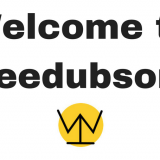
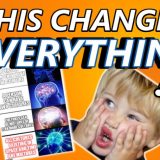
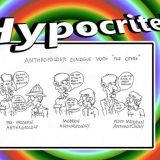
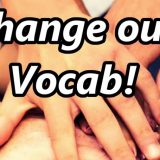
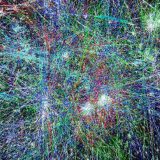


Su tesisat hizmetleri, su kaçak tespiti, musluk tamir ve klozet tamiri için bizi arayabilirsiniz. Su kaçak tespiti, musluk tamiri, klozet tamiri ve daha fazlası için bizi arayın.
Detaylar: Tesisatçı
The energy gap will continue to pose concerns in Europe. Afterrecord gas storage and energy efficiency gains helped avoid a blackout scenario in 2022, prospects for next winter (2023-2024) are limited as substitution to Russian gas imports will not suffice. Uncertain gas supply will create negative confidence effects and put the region’s fiscal capabilities to the test to cushion the impact of high electricity prices on firms and households. It will also compel policymakers to find ways to enhance energy efficiency and stabilize gas consumption beyond near term savings, together. The alternative is a repeat of 2012 and a risk of fragmentation in Europe (see Insurance and Macroeconomic Outlook – https://beinsure.com/insurance-macroeconomic-outlook-2023/ ).
(Geo)politics made a bursting comeback at the forefrontof concerns. From a split Congress and a noticeable return to good ‘ole protectionism through the Inflation Reduction Act (IRA) in the US, to Europe’s red herring policies to the negative competitiveness shock stemming from the energy crisis (sovereignty, re-industrialization), to China’s balancing act to exit zero-Covid, and the many important elections upcoming , investors and corporates will have to play coping strategies and buffers.
Wow, Tristan — this was such a refreshing post. It’s rare to see someone break down the creative process in academic writing in such a clear and honest way. Your CALI method really hit home for me, especially the part about linking ideas with personal memories. I think a lot of writers underestimate how powerful personal context can be in scholarly work.
The way you tied your experience with Vietnamese music into the broader academic concept of cross-cultural music making was chef’s kiss. It reminded me of how personal reflection is also essential in health writing — like when explaining complex topics such as acid reflux or autoimmune disorders. I recently came across an article that does this well on Healthusias.com, where they blend medical expertise with real-life experiences. It’s a great example of making “dry” topics more human and engaging — just like you did with your music and identity paper.
Thanks again for sharing your process. This is going straight into my bookmarks for future paper rewrites.
Zadruga i Elita Uživo – ultimativna streaming destinacija za sve ljubitelje najgledanijeg reality showa! Naša platforma donosi vam neprekinuti prijenos iz kuće, s kristalno jasnom slikom i zvukom. Pratite sve učesnike, njihove strategije, svađe i tajne saveze u realnom vremenu. Ne propustite nijedan važan trenutak – s našim servisom imate pristup svim kamerama i događajima 24/7. Naše korisničko sučelje je dizajnirano za jednostavno korištenje, omogućujući vam brzo prebacivanje između različitih prostorija. Gledajte ekskluzivni sadržaj koji se ne prikazuje u redovnom televizijskom programu i budite uvijek u toku sa svim događanjima. Pridružite se tisućama zadovoljnih korisnika koji su otkrili najbolji način za praćenje Zadruge i Elite!
Septum Perforasyonu, burun kıkırdağında delik oluşmasıyla ortaya çıkan ve nefes almayı zorlaştıran bir durumdur.
hgh kaufen online
References:
hanyunmedical.com
slope is a thrilling challenge in the platform with high-speed action.